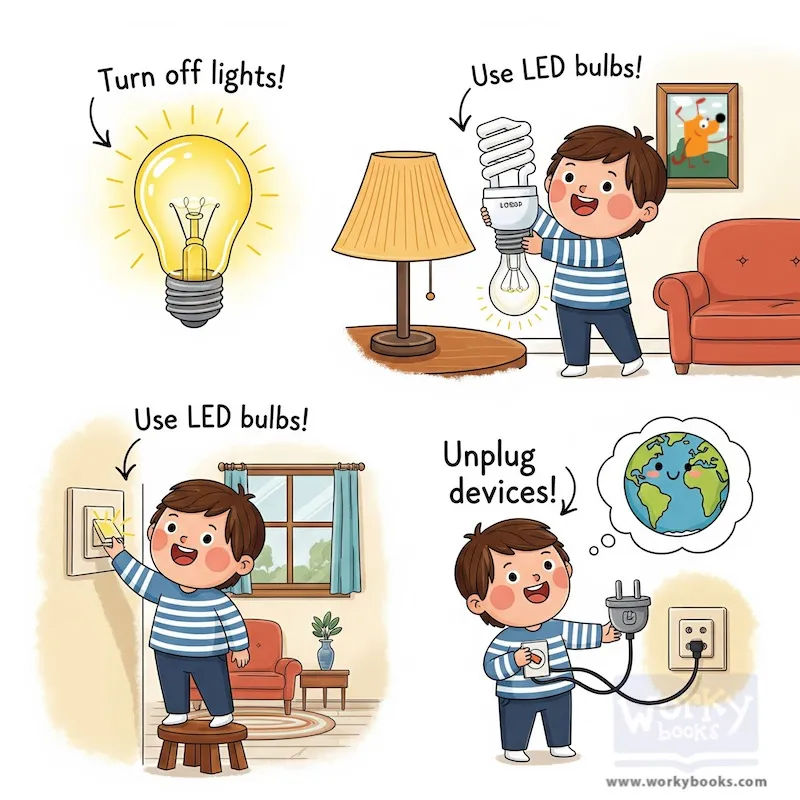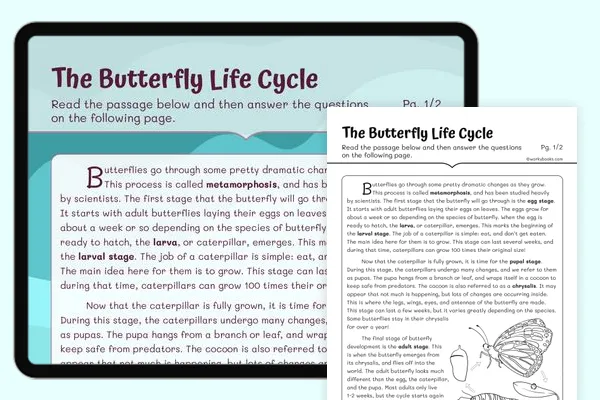Reduce Your Carbon Footprint: Simple Tips for Home — Reading Comprehension
Grades
- 2
- 3
- 4
Standards
- RI.3.1
- RI.4.1
- 4.ESS2.D
- 4-ESS3
PRINT+DIGITAL RESOURCE
This learning resource is available in interactive and printable formats. The interactive worksheet can be played online and assigned to students. The Printable PDF version can be downloaded and printed for completion by hand.
About This Reader
This passage focuses on reducing carbon footprints at home by conserving electricity. It suggests practical actions like turning off lights when leaving a room and using energy-efficient LED bulbs. The text introduces the concept of 'standby' or 'vampire' power, explaining how devices use energy even when turned off. By providing these tangible examples, the passage helps children understand how small actions can contribute to reducing carbon emissions. It emphasizes how using less electricity helps decrease the amount of carbon dioxide released into the atmosphere.
Perfect For:
👩🏫 Teachers
- • Reading comprehension practice
- • Auto-graded assessments
- • Literacy skill development
👨👩👧👦 Parents
- • Reading practice at home
- • Comprehension improvement
- • Educational reading time
🏠 Homeschoolers
- • Reading curriculum support
- • Independent reading practice
- • Progress monitoring
Reading Features:
📖
Reading Passage
Engaging fiction or nonfiction text
❓
Comprehension Quiz
Auto-graded questions
📊
Instant Feedback
Immediate results and scoring
📄
Printable Version
Download for offline reading
🔊
Read Aloud
Voice-over with word highlighting























